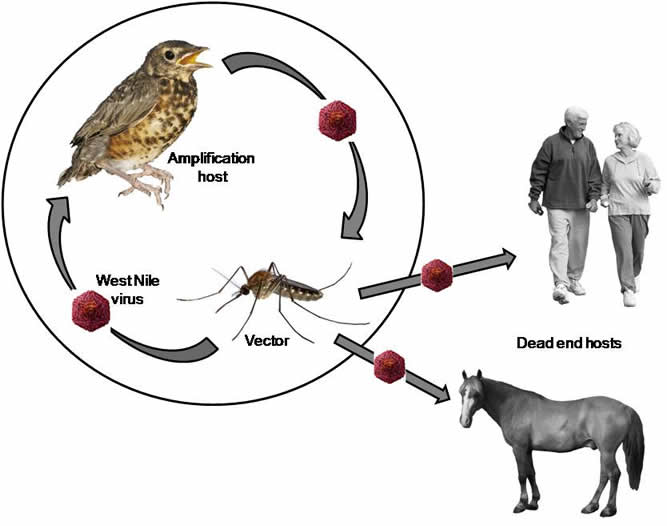The vector of the disease is the Culex spp. mosquito.
The mosquito gets infected when it bites a bird (wild or domestic) that is infected with the virus. Then, if this infected mosquito bites an other bird or mammal (mainly humans and equines) transmitting the virus to it.
The disease in birds:
When a bird is infected with the virus, it may develop depression, anorexia, decreased defecation, inability to fly, gait disorders, as well as bleeding from the gastrointestinal system and death.

The virus in the mosquitoes:
Mosquitoes do not develop disease from the virus. When receiving blood containing the virus, female mosquitoes may become infected for all their life span and thus potentially transmit WNV to multiple vertebrate hosts during successive blood meals.
The disease in equines:
Equines usually do not have symptoms. In clinical cases there is a variety of symptoms ranging from transient neurologic deficits to fulminating fatal encephalitis.
**Due to low virus concentration in their blood, humans and equines do not take part in the transmission cycle of West Nile virus as they are not capable of infecting mosquitoes.